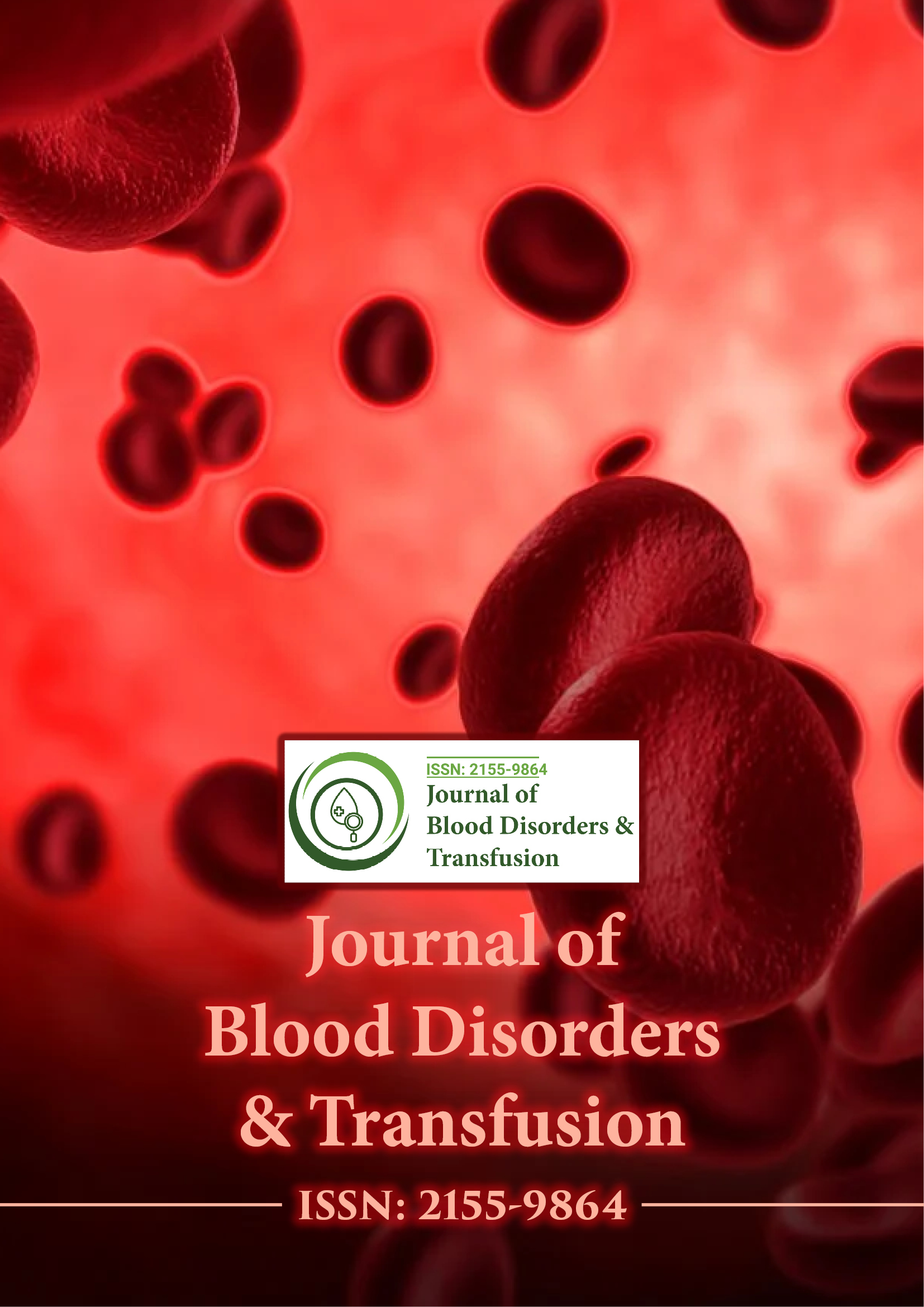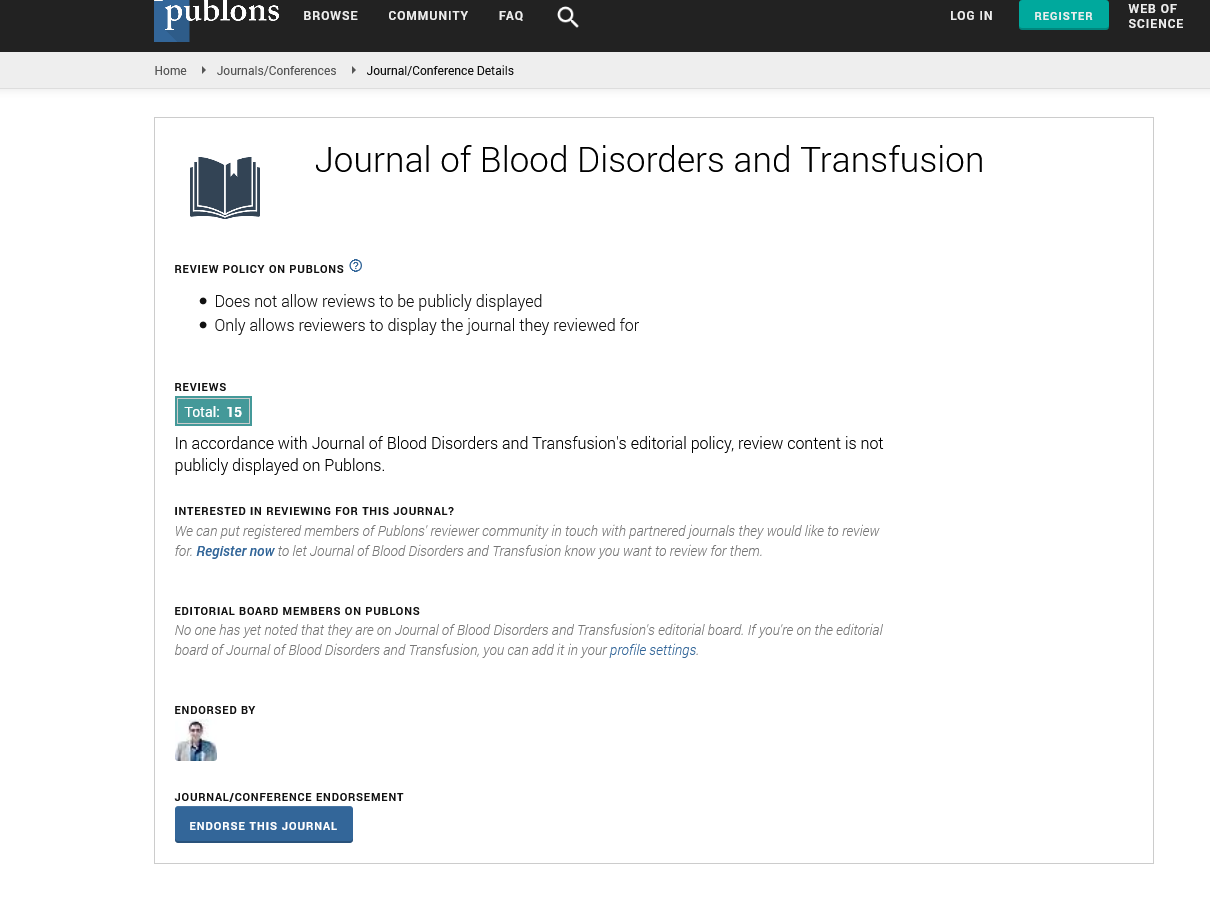Indexed In
- Open J Gate
- Genamics JournalSeek
- JournalTOCs
- Ulrich's Periodicals Directory
- RefSeek
- Hamdard University
- EBSCO A-Z
- OCLC- WorldCat
- Proquest Summons
- Publons
- Geneva Foundation for Medical Education and Research
- Euro Pub
- Google Scholar
Useful Links
Share This Page
Journal Flyer

Open Access Journals
- Agri and Aquaculture
- Biochemistry
- Bioinformatics & Systems Biology
- Business & Management
- Chemistry
- Clinical Sciences
- Engineering
- Food & Nutrition
- General Science
- Genetics & Molecular Biology
- Immunology & Microbiology
- Medical Sciences
- Neuroscience & Psychology
- Nursing & Health Care
- Pharmaceutical Sciences
Perspective - (2025) Volume 16, Issue 2
Clinical Behavior of Primary Plasma Cell Leukemia with Soft Tissue Plasmacytoma
Liang Tong*Received: 25-Feb-2025, Manuscript No. JBDT-25-28787; Editor assigned: 27-Feb-2025, Pre QC No. JBDT-25-28787 (PQ); Reviewed: 13-Mar-2025, QC No. JBDT-25-28787; Revised: 20-Mar-2025, Manuscript No. JBDT-25-28787 (R); Published: 27-Mar-2025, DOI: 10.4172/2155-9864.25.16.618
Description
Primary Plasma Cell Leukemia (PPCL) is a rare and aggressive plasma cell disorder that represents a small fraction of plasma cell malignancies. Unlike multiple myeloma, which is typically characterized by bone marrow infiltration and skeletal involvement, PPCL is distinguished by a high burden of malignant plasma cells circulating in the peripheral blood at the time of diagnosis. The clinical course of PPCL is often rapidly progressive and associated with resistance to conventional therapies. One of the concerning features observed in a subset of patients is the presence of extraosseous plasmacytomas — masses of plasma cells occurring outside the bone marrow microenvironment.
Primary plasma cell leukemia
PPCL is defined by the presence of circulating plasma cells in the peripheral blood or an absolute plasma cell count. It typically presents with systemic symptoms including anemia, thrombocytopenia, hypercalcemia and renal impairment. Unlike multiple myeloma, lytic bone lesions may be absent or less prominent at diagnosis and extramedullary involvement is more frequently encountered.
Molecular profiling studies have identified genetic aberrations that are more prevalent in PPCL than in multiple myeloma, such as deletions of TP53, chromosome 13q, and alterations in MYC. These changes contribute to the aggressive phenotype and poor prognosis. The median overall survival in untreated patients is measured in months, although survival has modestly improved with intensive therapy and stem cell transplantation.
Extraosseous plasmacytomas
Extraosseous plasmacytomas are collections of malignant plasma cells occurring in soft tissue sites outside the bone marrow and skeletal system. They may arise in various organs, including the liver, spleen, lymph nodes, skin, lungs and gastrointestinal tract. In patients with PPCL, these lesions are not simply a reflection of advanced disease but rather signify a distinct pathobiological behavior.
The presence of extraosseous plasmacytomas at diagnosis is associated with several adverse clinical features, such as high tumor burden, elevated Lactate Dehydrogenase (LDH) and increased proliferative index. These patients often present with more extensive organ involvement and exhibit signs of systemic inflammation.
Clinical outcomes and prognostic impact
Several retrospective and prospective analyses have evaluated the prognostic implications of extraosseous plasmacytomas in PPCL. Across studies, consistent patterns emerge: patients with such lesions have significantly reduced progression-free and overall survival compared to those without extramedullary disease.
For example, data from the European Group for Blood and Marrow Transplantation (EBMT) indicate that the presence of extraosseous disease at diagnosis is independently associated with a higher risk of early relapse following autologous stem cell transplantation. These patients often exhibit early treatment failure and may not respond adequately to conventional induction regimens based on proteasome inhibitors or immunomodulatory drugs.
Molecular characteristics
Recent studies utilizing next-generation sequencing and gene expression profiling have demonstrated that PPCL patients with extraosseous plasmacytomas exhibit unique transcriptional signatures. These signatures include upregulation of genes involved in cell adhesion, angiogenesis and immune evasion. Of particular interest is the overexpression of CXCR4 and CD44, which facilitate plasma cell migration and homing to peripheral tissues.
Therapeutic considerations
Treating PPCL with extraosseous plasmacytomas poses unique challenges. Standard induction regimens such as bortezomib-based triplets are often insufficient to control disease progression in this subgroup. Novel combinations incorporating monoclonal antibodies (e.g., daratumumab), second-generation proteasome inhibitors (e.g., carfilzomib) and cereblon modulators may offer improved responses, although data in this specific population are limited.
Citation: Tong L (2025). Clinical Behavior of Primary Plasma Cell Leukemia with Soft Tissue Plasmacytoma. J Blood Disord Transfus. 16:618.
Copyright: © 2025 Tong L. This is an open-access article distributed under the terms of the Creative Commons Attribution License, which permits unrestricted use, distribution, and reproduction in any medium, provided the original author and source are credited.

